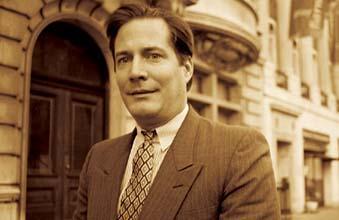PHILADELPHIA — Hal Wheeler wanted to transform the skyline of Baltimore. The Philadelphian’s plans for a 59-story, $400 million tower on a parking lot just steps away from the city’s famed Inner Harbor was the talk of mid-Atlantic real estate.

The tower, which would have been 20 stories higher than the next-tallest Baltimore building, was slated for a block full of potential but little progress. But city leaders knew that if anyone could pull it off, Wheeler could.
With an engaging personality and bold ideas, Wheeler was already putting an indelible mark on his native Philadelphia. And he had a reputation as a comeback kid of sorts, someone who continually overcame obstacles.
“There are certain people who you knock them down or push them, they get back up,” said business associate Roger Friedman. “That’s how Hal was.”
But as the nation’s economy came unravelled, so did Wheeler’s business magic. By the time of his untimely death at 54 a year and a half ago, Hal Wheeler’s celebrated projects were in trouble.
Ups and downs
It wasn’t always easy for Wheeler.
When he first assembled a series of properties on Rittenhouse Square in the mid-1990s and toyed with ideas for what to put on the combined properties. He had initially settled on a hotel-condo project. When things looked like a go, he lost financing after Sept. 11, 2001, when lenders became skittish after the World Trade Center attacks.
Then, Wheeler decided to sell the parcels to a company from Chicago and lease them while he devised his plans. When progress stalled on the site and Wheeler couldn’t make lease payments, the Chicago company took control of the site in 1998. Eventually, Wheeler, who still had an option to buy it back, managed to regain control of the land and came up with his plans for what became 10 Rittenhouse Square.
Now, less than two years after he died of a heart attack, Wheeler’s legacy has been upended. While his company successfully constructed several projects, such as the Delran Town Center and Montgomeryville Plaza, many of his high-profile projects, like untended gardens, are withering or dead. The dissolution of so many projects in a short time is jarring for a developer who seemed to tenaciously overcome challenges and usually hit home runs.
What happened?
Ten Rittenhouse Square, a $300 million condominium project in one of Philadelphia’s toniest neighborhoods, is in receivership. A $135 million restoration of the old Boyd Theatre, a classic 1920s movie palace on Chestnut Street, terminated. A proposed $100 million transit-oriented, mixed-use development on 13 acres on Lancaster Avenue in Berwyn axed.
In Baltimore, where Wheeler expanded during the real estate boom, two prominent developments his company helped spearhead — including the landmark tower — have met similar fates.
The tower property on a site referred to as the McCormick & Co. spice lot was sold in May in a foreclosure auction. In another Baltimore project, a bankruptcy judge approved a restructuring plan to liquidate a Hotel Monaco that Wheeler helped put into the historic former headquarters of the Baltimore & Ohio Railroad.
Kimco Realty Corp. bought the hotel portion of the project this past spring and another real estate entity bought the office and retail spaces in the former rail property. They all sold at steep discounts.
“As with many things, timing is key and he ended up swimming against currents that made it difficult for some of the most successful developers in the nation who had projects that didn’t succeed,” said Michael Sklaroff, a real estate attorney with Ballard Spahr who worked with Wheeler and his company Wheeler Bros., which he started with his brother Bill.
Charming and creative
Described as “charming” by many people, Wheeler had an knack for being creative when it came to real estate, whether it was envisioning a development, arranging financing or convincing people involved to give him a more time until all of the pieces of his plan came together. However, forces at work before his death had begun to test the viability of some of Wheeler’s projects. A credit crunch caught many in the real estate sector off guard and unable to refinance or fund projects to the end. Lenders squeezed developers to pay up, and banks and other financial institutions sought court judgments to force the issue en route to foreclosure proceedings.
Compounding matters, a bust in the residential market made some condominium and housing projects look foolish. In spite of the obstacles and difficult times facing developers during this protracted recession, Wheeler appeared to be keeping his real estate operations forging ahead.
Though many of the projects were in precarious states before his death, it wasn’t long afterward that things began to unravel.
“It was a difficult balancing act and when he wasn’t there keeping the balls in the air, a lot of them fell out of the sky,” said Wayne Zukin, a Philadelphia real estate developer who served as Wheeler’s lawyer for a number of years. “He was very good at telling the story and keeping the story alive and a project alive. He was good at smoothing the edges and keeping everyone moving forward. When he wasn’t around to do that and maybe money was needed here or a problem was there, it becomes insurmountable when someone like Hal wasn’t there to walk them through it.”
Roger Friedman met Wheeler nearly 20 years ago and, through a fund, initially arranged financing for various Wheeler projects. Eventually, Friedman worked as a lawyer at Wheeler’s development company and was involved with 10 Rittenhouse and the Baltimore expansion. People “believed in him,” he said.
‘He was a visionary’
Wheeler grew up in Lower Merion and went to George Washington University. His brother Bill joined him in Washington, D.C., where they stuck around and opened a bar that became a popular watering hole for politicians. A glimpse of Wheeler can be seen in Adams Morgan Day, a community celebration and street festival he founded in 1978. The festival not only gained national attention but is still held today each fall in Washington. While in the nation’s capital, Wheeler and his brother began to dabble in real estate, building shopping centers.
The brothers returned to Philadelphia and continued to have success doing retail development around the city, such as in Chestnut Hill and off City Avenue, as well as in New Jersey. He eventually formed a partnership with Bob Ambrosi, chairman and CEO of ARC Properties, a successful real estate company in Clifton, N.J. The two entered into joint ventures on several projects under the ARC Wheeler name.
Ten Rittenhouse on Rittenhouse Square, the B&O development in Baltimore and a undeveloped waterfront site on the Gulf of Mexico in Longboat Key, Fla., that was foreclosed upon last December were among Ambrosi and Wheeler’s marquee projects. Ambrosi declined comment for this article, saying Wheeler was a “sensitive subject.”
Among Wheeler’s attributes, friends and colleagues say, was an uncanny ability to look at a piece of real estate and despite whatever abandoned or dilapidated state it was in envision something grand rising up in its place.
“Hal was a visionary,” Sklaroff said. “He was one of the people who helped shape the skyline of Philadelphia with a key project that is in one of our most important neighborhoods, which is Rittenhouse Square. He saw the possibilities and had the drive to see it through.”
Ten Rittenhouse and the Boyd were such projects.
Ken Mallin of Mallin Panchelli Nadel worked with Wheeler on assembling the parcels where 10 Rittenhouse would eventually stand and was involved with the Boyd project. In the spring of 1995, Wheeler proposed constructing a hotel-condo project at the Rittenhouse Club but ditched those plans. He eventually closed on buying the Alison building at 1809 Walnut St., the Rittenhouse Club at 1811 Walnut and four small commercial properties on 18th Street, giving him a larger site to work with.
Wheeler had several ideas for the site including a grocery store and a mixed-use development that included a high-end hotel, condos and stores. He settled on a condo complex designed by Robert A.M. Stern with 135 units. Some preservationists felt the four commercial properties should be saved because of architectural significance. The debate over whether to spare the buildings held Wheeler up for two years.
Those lost two years proved fateful.
“When he resolved it would be 10 Rittenhouse, he couldn’t get the OK to tear down those buildings,” Mallin recalled. “Ultimately, when he was ready, it was the end of the market. He had about half of the condos sold and he lost half of those agreements. If they had been able to hit the market at the right time like other people, they would have been very successful. Those two years killed them.”
The building opened in November 2009 with 38 condos sold. Then, beginning last summer, iStar Financial Inc., one of the lead lenders for 10 Rittenhouse, was trying to get its loan paid back and that triggered a round of legal battles between it and a union pension fund that contributed to the project.
The positive legacy for Wheeler will be having constructed the last luxury high-rise on Rittenhouse Square, said John Decker of Dequity Investment Group, which advises the Delaware Valley Real Estate Investment Fund, the union pension fund for Philadelphia construction workers. The fund invested in 10 Rittenhouse and briefly took over the property while it went through legal proceedings with iStar. Decker, in another capacity with Royal Bank, was involved with other real estate transactions with Wheeler that were successful.
“The development cycle takes all prisoners and the timing of the market was out of everyone’s control,” Decker said. “You have to juggle and manage crises and that goes to the strength of the team you put together and Hal had a number of things in process when he died suddenly, which was tragic.”
Natalie Kostelni, Reporter
Philadelphia Business Journal





